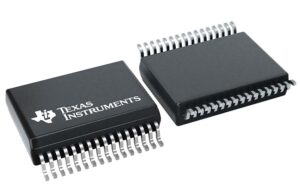Texas Instruments (TI) has introduced a highly integrated, functional safety-compliant, isolated gate driver.
 This isolated Gate driver enables engineers to design more efficient traction inverters and maximize electric vehicle (EV) driving range.
This isolated Gate driver enables engineers to design more efficient traction inverters and maximize electric vehicle (EV) driving range.
The new UCC5880-Q1 reinforced isolated gate driver offers features that enable EV powertrain engineers to increase power density and reduce system design complexity and cost while achieving their safety and performance goals.
As EVs continue to grow in popularity, semiconductor innovations in traction inverter systems are helping overcome critical barriers to widespread adoption.
Automakers can build safer, more efficient and more reliable silicon carbide (SiC)- and insulated-gate bipolar transistor (IGBT)-based traction inverters by designing with UCC5880-Q1, featuring real-time variable gate-drive strength, Serial Peripheral Interface (SPI), advanced SiC monitoring and protection, and diagnostics for functional safety.
“Designers of high-voltage applications like traction inverters face a unique set of challenges to optimize system efficiency and reliability in a small space,” said Wenjia Liu, product line manager for high-power drivers at TI. “Not only does this new isolated gate driver help enable engineers to maximize driving range, but it also integrates safety features to reduce external components and design complexity. And it can be easily paired with other high-voltage power-conversion products such as our UCC14141-Q1 isolated bias supply module to improve power density and help engineers reach the highest levels of traction inverter performance.”
The need for higher reliability and power performance for EVs is continuously growing, as efficiency gains have a direct impact on operating range improvement per charge.
But achieving any increase in efficiency is difficult for designers, given that the majority of traction inverters already operate at 90% efficiency or higher.
By varying the gate-drive strength in real time, in steps between 20 A and 5 A, designers can improve system efficiency with the UCC5880-Q1 gate driver as much as 2% by minimizing SiC switching power losses, resulting in up to 7 more miles of EV driving range per battery charge.
For an EV user who charges their vehicle three times per week, that could mean more than 1,000 additional miles per year.
In addition, the UCC5880-Q1’s SPI programmability and integrated monitoring and protection features can reduce design complexity as well as external component costs.
Engineers can further reduce components and quickly prototype a more efficient traction inverter system using the SiC EV Traction Inverter Reference Design.
This customizable, tested design includes the UCC5880-Q1, a bias-supply power module, real-time control MCUs and high-precision sensing.
TI is showcasing high-voltage innovations for a sustainable future, including the UCC5880-Q1, at the 2023 Power Conversion and Intelligent Motion (PCIM) Europe conference May 9-11.
Demonstrations will show system-level innovations for gallium nitride (GaN)- and SiC-based designs as well as other TI technologies to increase power density and efficiency for EVs, power supplies, energy storage systems and more.
TI is committed to helping engineers unlock the power of high-voltage technology with innovations in power conversion and wide band-gap semiconductors.

